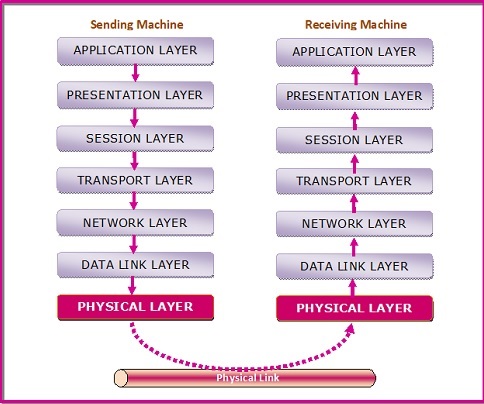
 Data Structure
Data Structure Networking
Networking RDBMS
RDBMS Operating System
Operating System Java
Java MS Excel
MS Excel iOS
iOS HTML
HTML CSS
CSS Android
Android Python
Python C Programming
C Programming C++
C++ C#
C# MongoDB
MongoDB MySQL
MySQL Javascript
Javascript PHP
PHP
- Selected Reading
- UPSC IAS Exams Notes
- Developer's Best Practices
- Questions and Answers
- Effective Resume Writing
- HR Interview Questions
- Computer Glossary
- Who is Who
Network Physical Layer
The network physical layer is the lowest network layer in the Open System Interconnections (OSI) model. The primary concern of this layer is transmission of individual bits from one node to another over a physical medium.
In TCP/IP model, the physical layer and the data link layer are combined as the host - to - network layer.
Physical Layer in the OSI Model
The Open System Interconnections (OSI) model is a layered networking framework that conceptualizes how communications should be done between heterogeneous systems. The physical layer is its lowest layer.
The following diagram depicts the position of the physical layer where a transmission is done from a sending machine to a receiving machine.

Functions of Physical Layer
Defining the physical characteristics and functions of the physical devices and interfaces so that transmission can occur
Specifying the number of pins in each of the devices as well as the purpose of each pin
Defining the process of bit - encoding, like, how many volts should represent a 0 bit and 1 bit in case of electrical signals
Laying out the transmission medium and type of signal for transmitting the bits, i.e. electrical pulses, optical pulses or radio signals
Determining the data transmission rate and the duration of a bit
Stating the topology, i.e. physical layout, of the network devices
Specifying the direction of transmission, i.e. whether the transmission is in simplex mode, half duplex mode or full duplex mode

